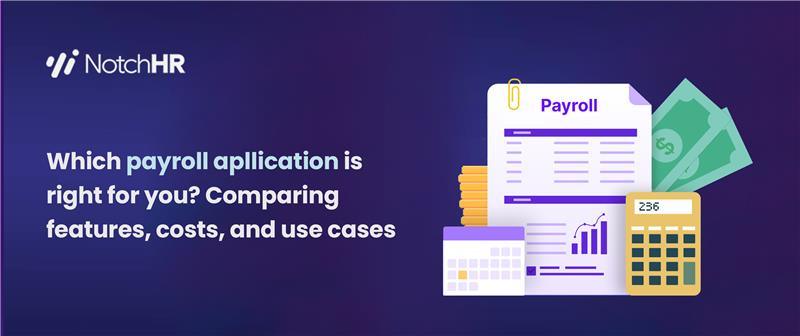Times are tough, that’s why you have to be tougher. While you have to keep working to go up the ladder professionally, you can try to find ways to effectively manage your current salary. Hence, it’s crucial to devise a strategy around how you spend your salary so you can achieve financial stability and secure a prosperous future. This you can do effectively with the 50-30-20 budget rule.
What is the 50-30-20 budget rule?
The 50-30-20 budget rule is a simple and effective approach to achieving financial balance and security. In this article, we will delve into the core principles of this budgeting method, highlighting its benefits and providing practical steps to implement it in your life.
By following the 50-30-20 budget rule, you can take control of your finances, save for the future, and enjoy a healthier financial outlook.
Importance of Budgeting
Properly budgeting and managing your salary provide numerous benefits. It allows you to have a clear overview of your financial situation and prevents you from living paycheck to paycheck. When you have control over your salary distribution, you gain a sense of empowerment and security.
Effective salary management enables you to build an emergency fund, save for long-term goals, and create a cushion for unexpected expenses. It also helps you avoid excessive debt and ensures that you can enjoy a balanced lifestyle without compromising your financial security.
Understanding the 50-30-20 Budget Rule
The 50-30-20 budget rule is a popular and widely recommended approach to budgeting, designed to help individuals and families allocate their income efficiently. It advocates for dividing your after-tax income into three distinct categories: needs, wants, and savings. By allocating a specific percentage of your income to each category, you can maintain financial stability while still enjoying discretionary spending.
The Three Categories
1. Needs (50%)
The first category, needs, encompasses essential expenses that are necessary for your day-to-day living. These include:
- Housing: Rent or mortgage payments, property taxes, and utilities.
- Transportation: Commercial bus, car pooling, vehicle payments, fuel, insurance, and maintenance costs.
- Food: Provision shopping and dining expenses.
- Healthcare: Medical bills, Insurance premiums, and prescription medications.
- Utilities: Internet data, airtime, and other essential services.
Allocating 50% of your after-tax income to cover these needs ensures that you maintain a stable foundation and meet your basic living requirements. This is crucial because your daily survival is tied to it.
Read also: Managing Your Salary: Choosing Between Investing and Saving
2. Wants (30%)
The second category, wants, represents discretionary spending that brings joy and enhances your lifestyle. These expenses include:
- Entertainment: Dining out, going to movies, concerts, or sporting events.
- Travel: Vacations, weekend getaways, and exploring new destinations.
- Hobbies: Pursuing activities such as photography, painting, or playing a musical instrument.
- Fashion: Clothing, accessories, and personal grooming.
By allocating 30% of your income to wants, you can indulge in activities and purchases that bring you happiness without jeopardizing your financial stability. Your mental health will appreciate you for this.
3. Savings (20%)
The third and final category, savings, focuses on building a financial safety net and planning for the future. It includes:
- Emergency Fund: Setting aside funds for unexpected expenses or financial emergencies.
- Retirement: Contributing to retirement accounts such as pensions.
- Investments: Allocating money for long-term growth through stocks, bonds, or other investment vehicles.
- Debt Repayment: Paying off outstanding debts such as credit cards or loans.
By saving 20% of your income, you can secure your financial future and work towards achieving long-term goals. You future self will say thank you.

Implementing the 50-30-20 Budget Rule
Now that we have a solid understanding of the three categories, let’s explore how to implement the 50-30-20 budget rule effectively:
Step 1: Calculate Your After-Tax Income
To begin, determine your monthly after-tax income. This is the amount you receive in your bank account after taxes and other deductions have been taken out.
Step 2: Allocate Percentages to Each Category
Based on the 50-30-20 budget rule, allocate the corresponding percentages to your needs, wants, and savings. For example, if your after-tax income is ₦150,000 per month:
- ₦75,000 (50%) would go towards needs.
- ₦45,000 (30%) would be allocated to wants.
- ₦30,000 (20%) would be dedicated to savings.
Step 3: Track Your Expenses
Monitor your spending and ensure that you adhere to the allocations set for each category. Consider using budgeting apps or spreadsheets to help you stay on track and manage your finances effectively.
Step 4: Make Adjustments as Needed
Over time, you may find that your financial circumstances change. It’s important to regularly reassess your budget and make adjustments as necessary. If your income increases, you might choose to increase your savings percentage or allocate more towards your wants. Likewise, if you face financial constraints, you may need to adjust your spending in the wants category.
Benefits of the 50-30-20 Budget Rule
Adopting the 50-30-20 budget rule, along with leveraging the features provided by NotchHR, offers numerous advantages that can positively impact your financial well-being:
Simplicity
The rule provides a straightforward and easy-to-understand framework for budgeting, making it accessible to individuals at any level of financial literacy.
Flexibility
The allocation percentages can be adjusted based on personal circumstances and financial goals.
Financial Security
By saving 20% of your income, you create a safety net for emergencies and future expenses.
Reduced Stress: Having a well-defined budget reduces financial anxiety and provides peace of mind.
Long-term Planning
The rule encourages savings for retirement and investments, helping you work towards your long-term financial objectives.
NotchHR Wallet: Take Control of Your Finances
To make the budgeting process even more convenient and efficient, NotchHR offers a powerful feature called Wallet. Wallet allows you to perform basic transactions and track your spendings seamlessly within the NotchHR platform.
With Wallet, you can easily monitor your expenses, categorize transactions, and gain valuable insights into your financial habits. Take advantage of this feature to enhance your budgeting efforts and achieve greater financial control.
Learn more about NotchHR Wallet
More Tips for Successful Budgeting
Here are some additional tips for effectively managing your salary:
Track your expenses
Keep a record of your spending to identify areas where you can cut back or make adjustments. Use budgeting apps or spreadsheets to monitor your income and expenses easily.
Automate savings
Set up automatic transfers from your salary account to your savings or investment accounts. This ensures consistent savings and eliminates the temptation to spend the money elsewhere. Consider using separate accounts for different savings goals to stay organized.
Review and adjust regularly
Regularly review your salary division plan and make adjustments as necessary. Changes in circumstances or financial goals may require modifications to your allocation strategy. Stay proactive and flexible in adapting your plan to evolving needs and priorities.
Seek professional advice
If you’re unsure about managing your salary or need help with complex financial matters, consider consulting a financial advisor. They can provide personalized guidance based on your specific situation and help you optimize your salary distribution plan.
Conclusion
In conclusion, the 50-30-20 budget rule offers a structured approach to budgeting that promotes financial balance and security. By prioritizing your needs, wants, and savings and utilizing the Wallet feature, you can achieve a healthy financial lifestyle and work towards your financial goals. Start today and take control of your finances, paving the way for a brighter and more financially stable future.



